calsfoundation@cals.org
Lonsdale (Garland County)
| Latitude and Longitude: | 34°32’40″N 092°48’30″W |
| Elevation: | 427 feet |
| Area: | 0.40 square miles (2020 Census) |
| Population: | 103 (2020 Census) |
| Incorporation Date: | May 10, 1913 |
Historical Population as per the U.S. Census:
|
1810 |
1820 |
1830 |
1840 |
1850 |
1860 |
1870 |
1880 |
1890 |
1900 |
|
– |
– |
– |
– |
– |
– |
– |
– |
– |
– |
|
1910 |
1920 |
1930 |
1940 |
1950 |
1960 |
1970 |
1980 |
1990 |
2000 |
|
– |
166 |
153 |
119 |
91 |
95 |
104 |
117 |
127 |
118 |
|
2010 |
2020 |
|
|
|
|
|
|
|
|
|
94 |
103 |
|
|
|
|
|
|
|
|
Lonsdale of Garland County is located on Highway 88, seventeen miles northeast of Hot Springs (Garland County). Before the Civil War, families (including the Houpts, Warfords, and Rutherfords) began settling in the area that later became the town of Lonsdale. The Egbert Houpt home became a stage stop/relay station on the stage line that developed between Little Rock (Pulaski County) and Hot Springs.
The town was organized circa 1900 and is named for its founder, John Gerdes Lonsdale Sr. (1872–1943), a nationally known Hot Springs banker. Orphaned at an early age, Lonsdale was raised by his uncle, Hot Springs businessman J. P. Mellard. Lonsdale, starting as a clerk in his uncle’s real estate business, became a bond and stock partner in the firm (in New York and Hot Springs) of Gaines and Lonsdale, as well as a director of the New York Hotel Company, an owner of the Eastman Hotel in Hot Springs, a director of the Security Bank in Hot Springs, a member of the New York Stock Exchange firm of Logan & Bryan, and the president of the National Bank of Commerce in St. Louis and its successor, the Mercantile-Commerce Bank and Trust Company. He was elected president of the American Bankers Association in 1930.
It was Lonsdale’s involvement in railroads, rather than banking, however, that led to the creation of the town of Lonsdale. Secretary and treasurer of the Little Rock, Hot Springs and Texas Railroad in 1894, Lonsdale was appointed its receiver in 1896 when the company went bankrupt. In 1899, he and other associates (including Samuel Fordyce of Hot Springs) reorganized the railroad as the Little Rock and Hot Springs Western (known locally as the “Hot Western”). In 1899, Lonsdale persuaded families in the area to grant the right-of-way to the Little Rock and Hot Springs Western. According to legend, he told locals, “Give me room and I’ll build you a town,” to which they replied, “How much room do you need, John?”
The first train ran over the line on April 1, 1900, and on May 1, John Lonsdale Sr. threw a festive celebration that included an auction of seventy-five town lots, free barbecue, square dancing, and a wedding of twin sisters to their sweethearts on the large auction platform. He also built a two-story vacation home on a 160-acre estate called “Peaceful Valley” at Lonsdale. Lonsdale and his wife, Marie, contributed generously to the Lonsdale community in many ways, including paying to bring electric lights and running water to the town. At Christmastime, the children of the community would come to the Lonsdale home and receive presents.
On September 20, 1901, the railroad line from Benton (Saline County) to Hot Springs was conveyed to the St. Louis, Iron Mountain and Southern Railroad. In 1917, the Iron Mountain and the Missouri Pacific were consolidated as the Missouri Pacific Railroad.
The train depot at Lonsdale helped the fledgling town, as did the local timber industry (especially the Pritchard-Collins Lumber Company), a stave mill, and a cotton gin. By the time the town incorporated in May 1913 as a city of the second class, it had two churches, a two-story school house, a movie house, and general stores. Its first officials were Mayor T. E. Buffington (who served until 1926), Recorder Milton Ewing, Treasurer Henry Richardson, and Constable Claude Tarvin. Aldermen were Warren Tarvin, Henry Richardson, and W. R. Carpenter. Alex Tucker, pastor of the Lonsdale Baptist Church, was the first postmaster.
On September 14, 1922, a devastating fire swept through the community. Started by a careless solderer’s blowtorch in Crossfield’s Garage on the east end of the main street, the fire spread to the adjoining Norsworthy’s general store and then across the street to the three-story Homeplate Hotel. A hose from the boilers at the Pritchard Collins Lumber Company was too short to reach the fire, and the pump on the largest of Hot Springs’ fire engines was out of order. Benton sent a small combination hose and chemical truck, but it arrived too late to help. Townspeople could only form bucket brigades that were unable to stop the spread of the fire. The twenty buildings destroyed (virtually all the town’s business establishment except for lumber mills) included Crossfield’s Garage, Green’s general store, Norsworthy’s general store, Bowen’s general store, C. W. Singer and Son general store, a garage and filling station, Lowe Brothers’ general store, two cottages owned by Vera Kragie, several residences, the Homeplate Hotel, Dr. T. E. Buffinngton’s office, and the town hall, jail, and post office. Forty people were left homeless.
Even before the fire, the timber supply that had attracted sawmills to the area was nearing the exhaustion point. The mills began moving elsewhere. In addition, Lonsdale lost its position on the road between Little Rock and Hot Springs when Arkansas Highway 5 (dedicated on July 5, 1925) bypassed the town. In 1959, Highway 70 joined Benton and Hot Springs; although closer to Lonsdale, this route also bypassed the town.
Lonsdale’s son, John Jr., tried to revive the town in 1940 by building the Colony House. He personally designed this building (advertised as “the South’s Complete Entertainment Center”) along the lines of a miniature Madison Square Garden. The facility contained convention and theater facilities for a city the size of Little Rock. It soon became a popular destination for people in nearby communities. The three-story building had foot-thick walls, sun decks on the second floor at each end of the building, and a twenty-foot tower. More than 1,500 people could fit into the auditorium to see movies or stage plays. When the portable seats were taken away, the auditorium was the scene of indoor tennis, roller skating, basketball, boxing, wrestling, dancing, and, on Sundays, community singing.
The Missouri Pacific line ran special trains to Lonsdale for the grand opening of the Colony House and a Pioneer Day celebration on July 4–6, 1940. The Lonsdale barber shop had closed for a month to encourage locals to go unshaven and let their hair grow. Men wore ten-gallon hats and women wore “Mother Hubbards” as they watched mule and horse races on the main street and attended a rodeo and carnival. At the Colony House, they saw the movie Birth of a Nation in the afternoons and then took part in square dancing followed by jitterbugging and swing dancing. An estimated 10,000–15,000 people showed up as Mayor G. W. Steely’s wish for a celebration that was “noisy but sober” was fulfilled.
John Lonsdale Jr. was killed in a car accident in 1952. In 1953, his widowed mother (John Sr. had died about a decade before John Jr.) gave eighty-seven acres to the Arkansas Baptist Assembly in John Jr.’s memory. The following year, the Baptists purchased the Colony House (which burned a few years later), a nearby six-acre lake, and 106 additional acres. In the 1960s, Spring Lake Camp was constructed on the property.
Lonsdale lost its train depot when the Missouri Pacific ended passenger service into Hot Springs in 1964. As of 2012, Lonsdale has no businesses and functions as a bedroom community for Hot Springs, Benton, and Little Rock. In addition to Spring Lake Camp, Lonsdale is home to Lonsdale Baptist Church, a city hall, a post office, a fire station which houses the Lonsdale Volunteer Fire Department, and a ten-acre park with a basketball court, walking trails, and pavilion. Children who live in Lonsdale attend schools in the Benton School District.
For additional information:
Anthony, Isabel, ed. Garland County, Arkansas: Out History and Heritage. Hot Springs, AR: Garland County Historical Society, 2009.
Hudgins, Mary D. “A Few Memories.” The Record 11 (1970): 104–108.
Moore, Maurice. “The Lonsdale Story.” Hot Springs Sentinel-Record, February 22, 1959.
“Mrs. Lonsdale Deeds Property to Baptists’ Spring Lake Assembly.” Hot Springs New Era, January 5, 1955.
Muncy, Violet B. “Lonsdale, U.S.A.: Two Men Passed this Way.” Hot Springs News, July 20, 1966.
———. “Two Men and a Town—Lonsdale.” The Record 5 (September 1964): 12–19.
Robbins, Elizabeth. “A Look at Lonsdale.” Hot Springs Sentinel-Record, July 26, 2011.
Elizabeth Robbins
Garland County Historical Society
 Colony House
Colony House  Colony House Band
Colony House Band 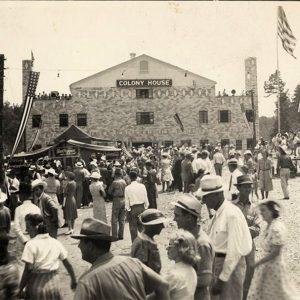 Colony House Crowd
Colony House Crowd 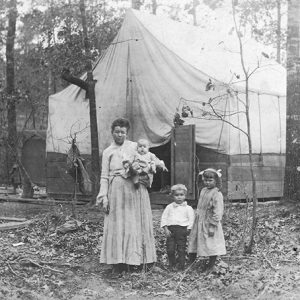 Cotton Workers' Tent
Cotton Workers' Tent 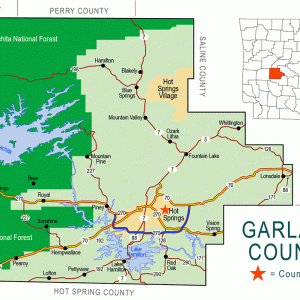 Garland County Map
Garland County Map  John Gerdes Lonsdale Sr.
John Gerdes Lonsdale Sr.  John Lonsdale
John Lonsdale  Lonsdale Pioneer Day
Lonsdale Pioneer Day 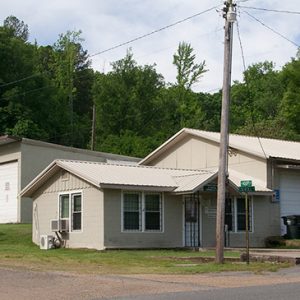 Lonsdale
Lonsdale 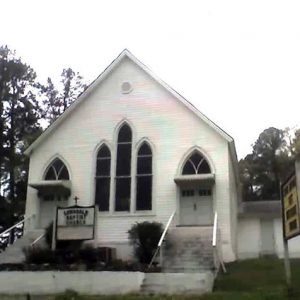 Lonsdale Baptist Church
Lonsdale Baptist Church 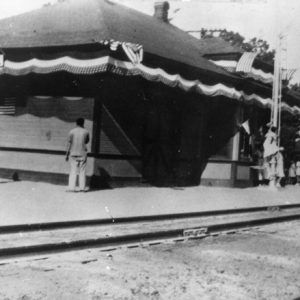 Lonsdale Depot
Lonsdale Depot  Lonsdale Jail
Lonsdale Jail 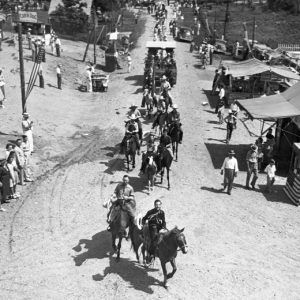 Lonsdale Parade
Lonsdale Parade  Lonsdale School
Lonsdale School 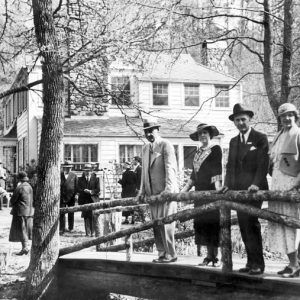 Peaceful Valley
Peaceful Valley 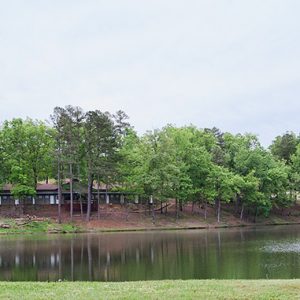 Spring Lake
Spring Lake 



I’ve always been intrigued by the jail that is in the park and wondered about its history.